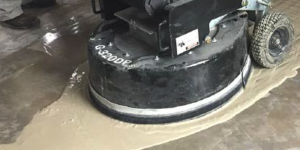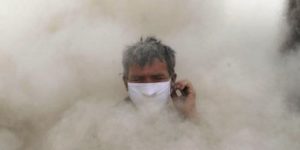
Over time, the everyday tasks associated with working in the concrete industry have changed. Originally, concrete was made on a construction site when sand was mixed with cement and water in a motor-driven mixer. Nowadays, many times concrete is premixed and delivered to work sites via ready-mix trucks equipped with a rotating drum, cutting down exposure to cement and concrete dust.
Concrete has been used in one form or another for more than 8,000 years, making it one of the oldest man-made building materials. All concrete essentially is a mixture of water, cement and aggregate (usually sand or rock). As building practices and standards have changed, so have these filler materials. One of these changes was the removal of asbestos in concrete.
As time has progressed, safety regulations and various factors have placed restrictions on the use of asbestos in building materials. Those who have worked with concrete have adapted to these changes and many now realize the health risks associated with asbestos. In addition to health risks, the removal of asbestos can have a significant impact on the environment as well.
History of asbestos use in concrete
Asbestos was often used as an additive in various industrial and commercial products between 1940 and the 1980s due to its unmatched ability to resist fire and electricity. These naturally occurring fibers are strong, abundant, microscopic and able to effectively absorb sound. Before the Toxic Substances Control Act was established in 1976, asbestos was often used in shipbuilding, cement mixtures, wallpaper, flooring, ceiling tiles, automotive brake materials and a variety of building materials.
At this time, it was unknown that exposure to asbestos fibers would be linked to the development of mesothelioma cancer, asbestosis and lung cancer. Due to negative health impacts, asbestos use has been banned in more than 60 countries. The United States has yet to fully ban the substance and 30 million pounds of asbestos are used in the country each year.
During peak years of use, asbestos fibers could be found in more than 3,000 consumer products and can still be found in homes, schools and buildings across the U.S. Although there are many types of asbestos, chrysotile asbestos is the most common of the six different forms of asbestos fibers. It accounts for more than 90 percent of asbestos found in buildings nationwide.
Asbestos is still widely used across Russia, China and India. Russia leads the world in asbestos production and is second to China in asbestos use.
Occupational exposure for concrete workers
Exposure to asbestos fibers is the No. 1 cause of occupational cancer in the United States. According to the Asbestos Disease Awareness Organization, asbestos is responsible for more than 50 percent of all cancer caused by occupational hazards. Occupations most at risk for asbestos-related diseases include firefighters, construction workers, electricians and service members. U.S. Navy veterans who served the country during World War II and the Korean War are the most at risk among the veteran population.
For those working with concrete, spotting asbestos is extremely difficult. Fibers were evenly distributed throughout the concrete mixture and are set in the hardened matrix, making it impossible for those removing concrete to see them with the naked eye. Unlike other building materials such as tiles or drywall that may show fine fibers as they disintegrate, concrete products don’t show asbestos when broken.
Renovating an older building may require removing asbestos-containing concrete, putting workers at an increased risk of inhaling or ingesting the fibers. Although asbestos fibers are sealed within the concrete, chipping or breaking asbestos-containing concrete could release these fibers into the air. Inhaling or ingesting these airborne fibers puts workers at risk of developing asbestos-related diseases, like mesothelioma. To confirm the presence (or absence) of asbestos, professional testing should be conducted before any construction is performed on potentially asbestos-containing concrete.
Family members of those with jobs that involve high risk of asbestos exposure are at risk of secondhand exposure. Employees bring home the asbestos fibers on their hair, skin and clothing and unknowingly transfer the carcinogen to their loved ones.
For anyone who may believe they have been exposed to asbestos at their work site or have concerns about potential exposure, immediately discuss working conditions with a supervisor. Prior to the beginning of a project, a certified professional should test the work site for asbestos. Workers should be equipped and properly trained on appropriate safety equipment if asbestos is present, additionally to prevent exposure and potential health effects.
Concrete demolition safety
Before approaching a project involving concrete removal, it’s important to understand the potential risks of asbestos exposure. If you’re planning to remove concrete, make sure you’re prepared. Use safety goggles to protect your eyes, as well as a face mask for dust. It’s important you’re equipped with the appropriate power tools or machine-mounted tools.
Prior to starting your project, research (if possible) when the concrete was laid. If the concrete was placed before 1975, testing should be done by a licensed professional.
The above article is courtesy of the Mesothelioma Cancer Alliance, www.mesothelioma.com.















